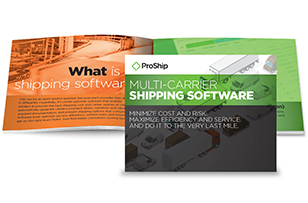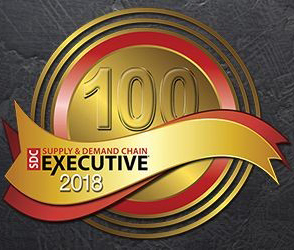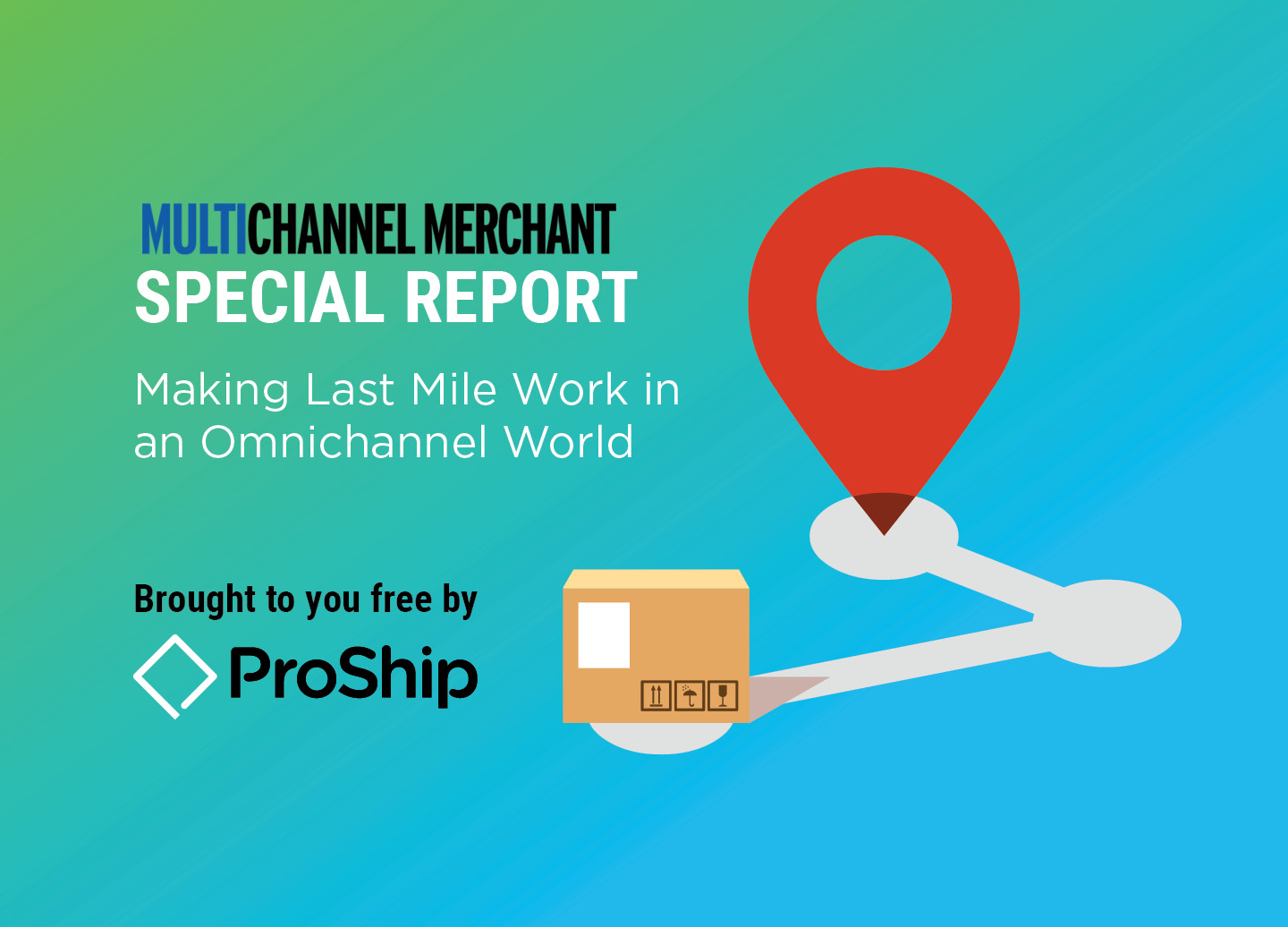What five things do companies need to think about when creating a successful hyperlocal delivery model?
In today’s world, traffic is faster, food delivery is held to incredibly quick standards and when we order something online – we expect it at our door within two days. Many retailers and manufacturers are struggling to keep up, and their customer service is lacking when they fall short. Indications are that accelerated demands will become normalized. In fact, a recent Logistics Viewpoints report shows that 50 percent of millennials still desire even quicker deliveries.
According to the “State of Shipping in Commerce” report from Temando, many e-commerce shippers are intent on expanding shipping and delivery options to keep up with how Amazon has revolutionized fulfillment, but the shoppers they are looking to satisfy are expecting more — and sooner.
“We’re noticing a huge push and pressure on the fulfillment side to get orders turned around on a much faster scale and pace than a lot of technology is capable of doing today,” says Michael Armanious, vice president of sales and marketing at Datex Corporation, a third-party logistics (3PL) management and warehouse solutions provider. “What normally would have taken less than an hour, all of the sudden needs to go out within minutes, which poses challenges in terms of planning.”
The truth is that customers want a window of delivery within a few hours, a “hyperlocal” last-mile initiative that companies are finding difficult to deploy. “By the time the order comes in, it has to be processed and ready to go for us to meet that very narrow window,” adds Armanious.

Last mile delivery is defined as ‘the movement of goods from a transportation hub to the final delivery destination’ – typically a personal residence – and is becoming more important than ever due to the surge of online ordering. The focus of last mile logistics is to deliver items to the end user when they expect it – which is as fast as possible. Last mile logistics has become an important area of interest for retailers, and manufacturers breaking into the e-commerce world, because of the growing demand for fully integrated omnichannel selling. Evolving omnichannel needs have made retailers and manufacturers evaluate their current transportation network capabilities and adjust accordingly.
This year more than 40 percent of all e-commerce purchases will be made on Amazon – according to an eMarketer estimate. They have set the standard for fast shipping with their Amazon Prime subscribers and continue to rank high in customer service satisfaction. The online behemoth announced recently a new Amazon Delivery Service Partner program, which is designed to let entrepreneurs run with their own local delivery networks of up to 40 vans, all proudly displaying the Prime logo.
Amazon currently has 75 stations in the US where Amazon.com packages are sent to and picked up by drivers. Algorithms determine which packages are sent there and which are sent to other delivery partners like FedEx and UPS.
“This is all about scaling cost effectively,” said Dave Clark, senior vice president of Amazon Worldwide Operations. He says that the program is “much more about customer experience and meeting overall growth. We think this is going to be a cost-effective way to do that.”

This program brings more of the costs and customer service under the control of Amazon, and the smaller entrepreneurs get to operate under the giant company’s name. Amazon said that the program is aimed to enable hundreds of small businesses to get started and will hire tens of thousands of new delivery drivers countrywide. Given the current trucker shortage and carrier strikes in the US, transportation costs are on the rise for many businesses, and this solution helps to lower them.
Not only are final mile logistics expensive when it comes to assets and providers, but a poor home delivery experience can also have a negative impact on a brand’s reputation. In many cases, the last mile delivery is the first “personal contact” between the consumer and the product. Was the packaging damaged? Was the delivery driver rude? Did he deliver within the window of time I asked for? Many different situations can turn an otherwise positive perception into a negative. Almost 100% of shoppers also say they would like delivery date estimates, yet more than half of retailers and manufacturers currently don’t offer this feature.
Rightly so, the focus placed on last mile delivery is important because, in many cases, this could be your key differentiator. Organizations like Amazon Prime, Amazon Now, and Wayfair have set precedent. Consumers can choose to shop anywhere they want and easily find product alternatives from other retailers/manufacturers – which is why it is so important to provide exceptional service and gain market share while building brand loyalty.
So what do companies need to think about when creating a successful last mile delivery model?
One, think beyond geography. Hyperlocal doesn’t only mean coverage of one specific region. The most successful hyperlocal strategies have the capability to scale. A strategy that focuses on a single “locality” will be difficult to scale in other areas. Being able to identify a widespread but local need and having a model that adapts to each new market will be crucial.
Two, identify an abundance of locations to use as “fulfillment centers.” For instance, distribution centers (DC’s) aren’t the only sites you can utilize to ship orders out of. In fact, if you only use DC’s, you’re already behind. Step up your omnichannel strategy and use your suppliers/manufacturers to drop ship, utilize third party logistics companies for additional help and definitely bring your stores into the mix. Did you know that Kohl’s reduced delivery time by ½ day on each delivery by employing their stores as fulfillment centers? (Forrester, 2017)
Three, think about using a variety of carriers, and don’t discount the smaller ones. Together, local, regional and national carriers create a perfect mix of delivery options and capabilities. In fact, smaller local carriers account for almost 60% of the U.S. trucking industry and can typically transport shipments from 80-100 miles within a specified zone. They are great for parcel last mile delivery as they are able to provide personalized, caring service for clients. Regional carriers are great for shippers with multiple distribution centers and a high concentration of customers within a geographical market. They also typically have wider time schedules for pick-up and delivery and often provide next-day deliveries.
Four, don’t just focus on what your competitors are doing, unless you can do it better. It may be easy to replicate a competitor’s strategy, but it’s not always a model that will work for you as well. Each company and each company’s customer base is different. Find a distinguishing angle of your own, because people love niche. Focus on doing what you’re able to do, and do it well.
Five, learn how to say ‘no’. It’s easy to think that you can do this, and this and this too, but you will never be able to please everyone all at once, even with a last mile delivery plan that you think is perfect. Stick to your strategy and tweak it only when necessary.
The opportunities lying ahead are huge. Logistics providers need to position themselves for the upcoming radical change and readjust their existing networks accordingly. The differentiator in this field will be technology. It will be the leading driver as to what companies can do for their customers. Updated technology will manage workflows, direct the customer experience and provides visibility to all parties. The end consumer will see the difference in the form of a package on their front step, days, even hours, after ordering. You’ll see the difference in the form of increased speed, efficiency and revenue.
Interested in learning more about the technology that can propel your last mile delivery strategy into gear?
Sources:
https://www.cnbc.com/2018/06/27/amazon-is-recruiting-entrepreneurs-to-start-delivery-networks.html
https://www.supplychaindive.com/news/last-mile-spotlight-trends-tech-gig-perfect/443091/
https://www.mckinsey.com/industries/travel-transport-and-logistics/our-insights/how-customer-demands-are-reshaping-last-mile-delivery
https://www.supplychain247.com/article/the_ecommerce_fight_for_last_mile_freight_delivery

 Back to Blog
Back to Blog






